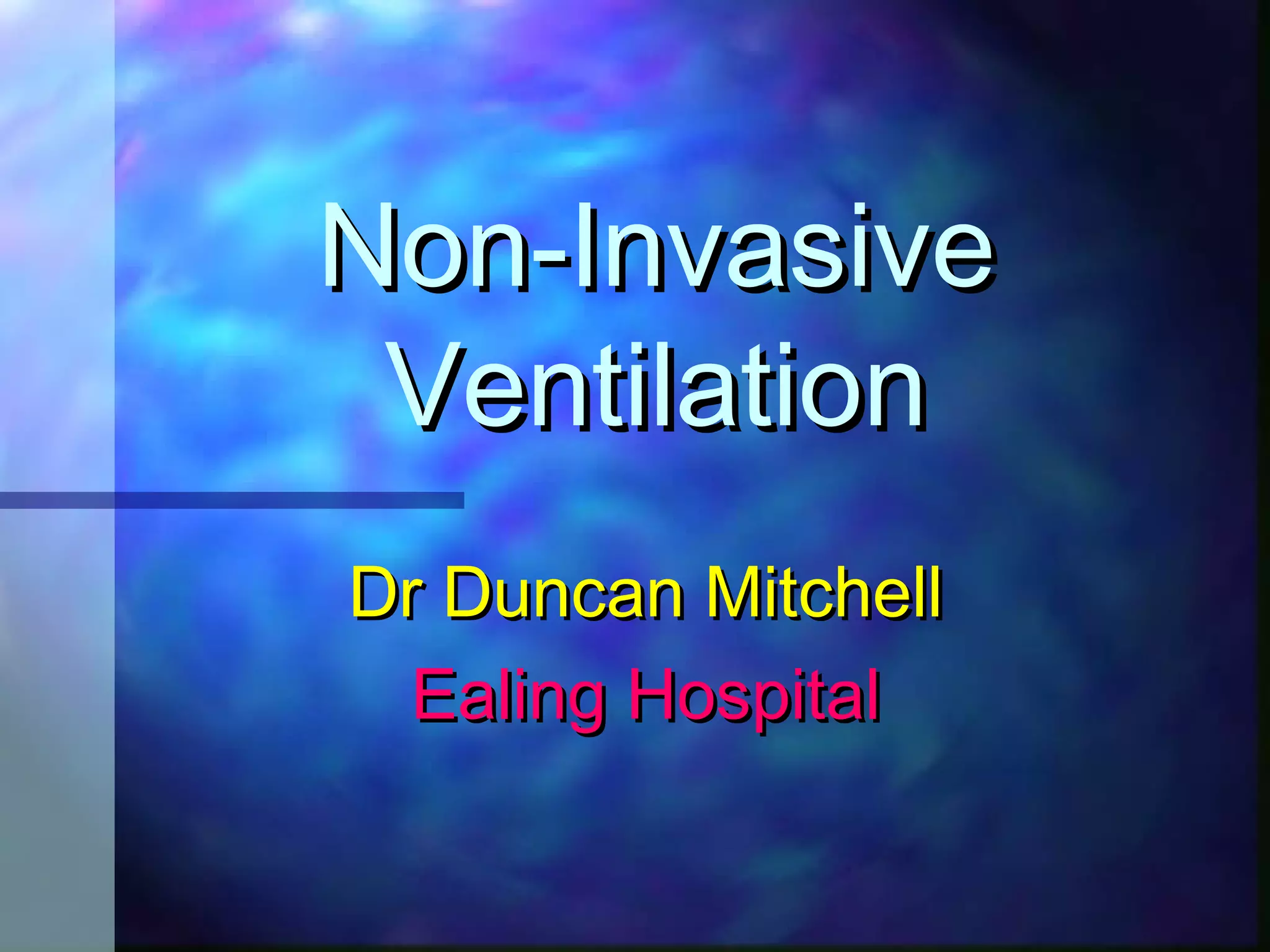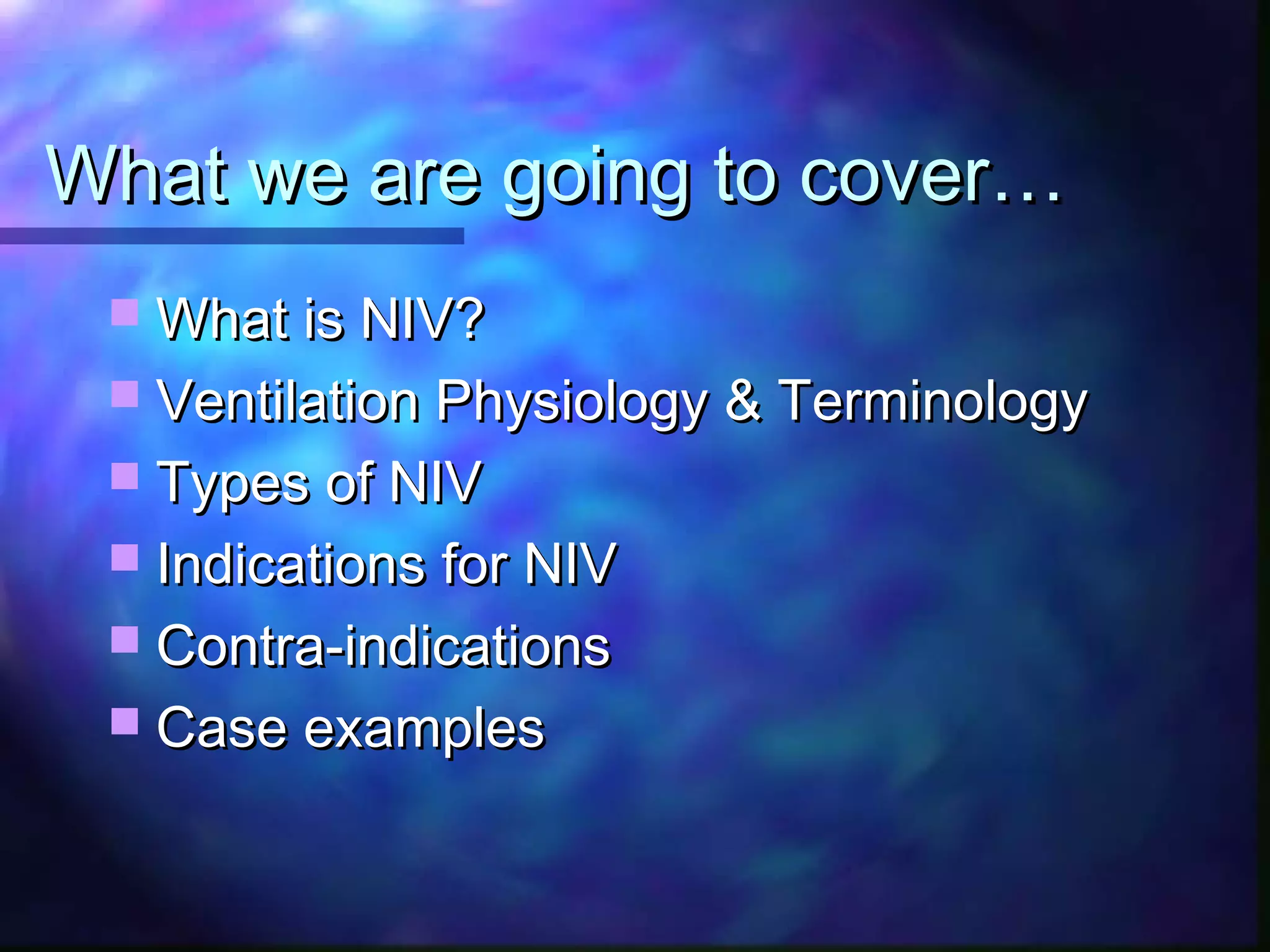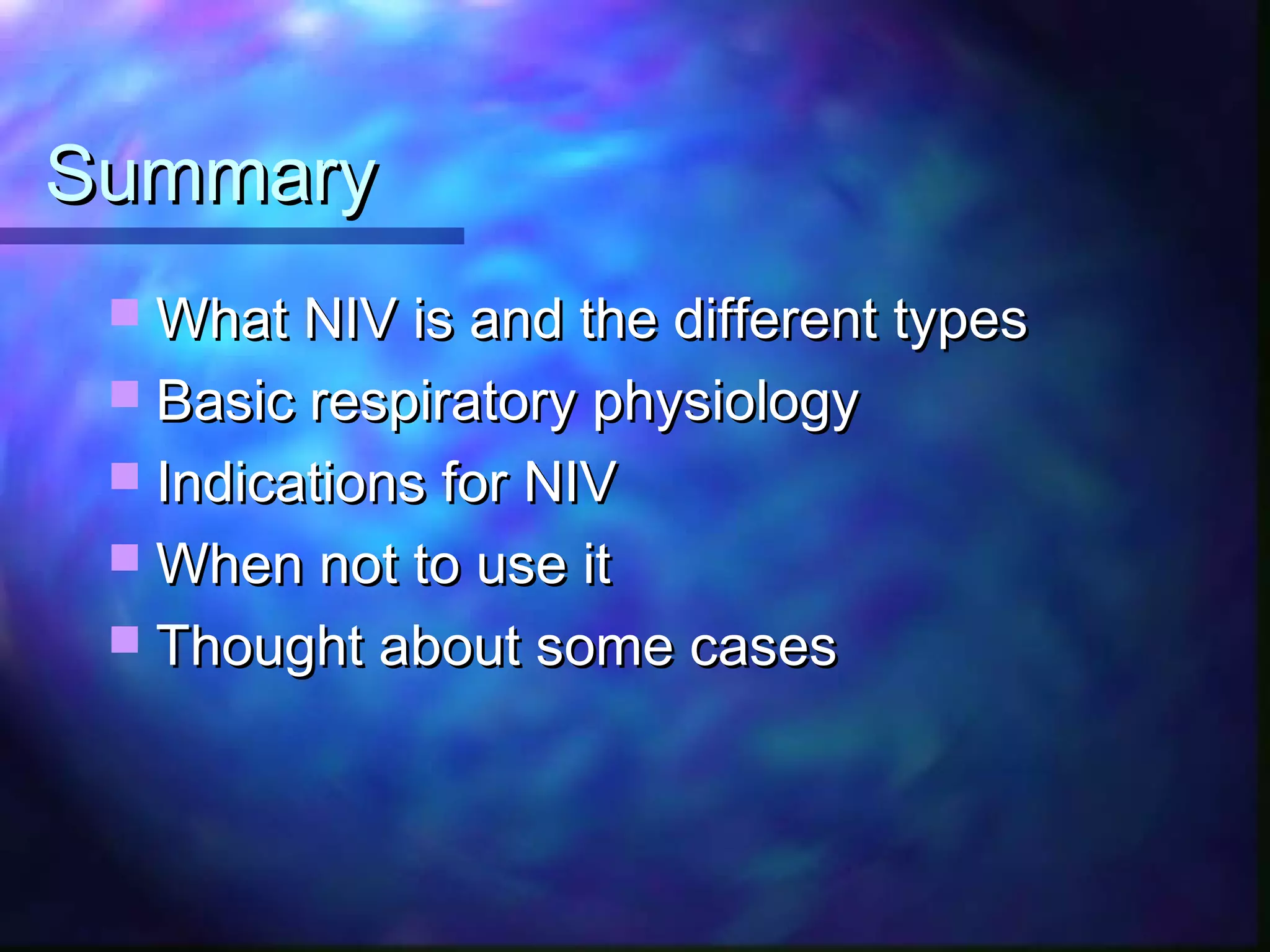Non-Invasive Ventilation (NIV) involves delivering ventilatory support without an invasive airway. The document discusses NIV, describing what it is, different types of NIV including bi-level positive airway pressure (BiPAP), indications for NIV use, and provides examples of case studies involving patients who may benefit from NIV treatment.





















